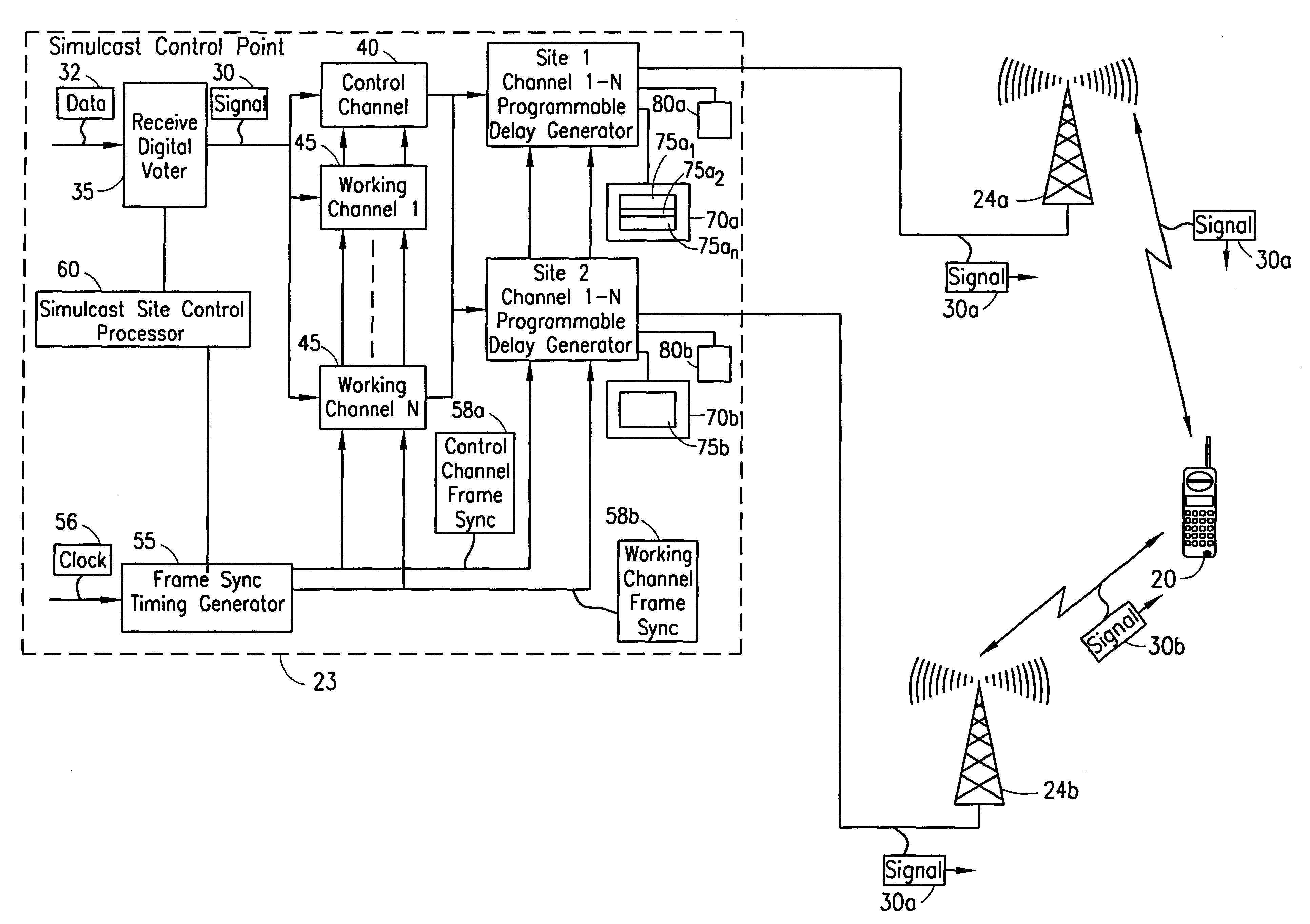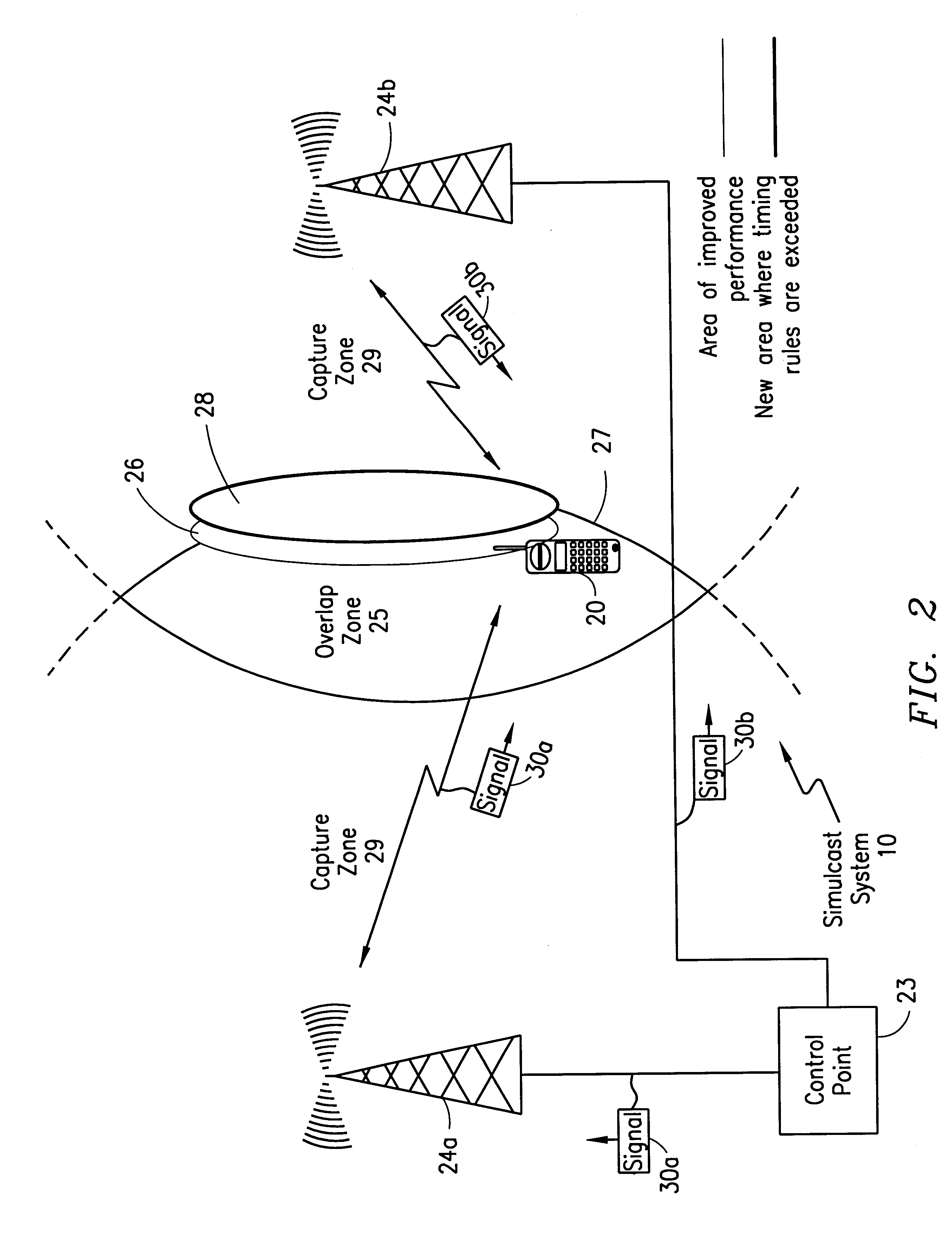System and method for dynamic overlap compensation in a simulcast network
a simulcast network and dynamic overlap technology, applied in the field of telecommunications systems, can solve the problems of retransmission of signals, no access to the system, performance issues of simulcast systems, etc., and achieve the effect of improving in-building coverage and efficient channel us
- Summary
- Abstract
- Description
- Claims
- Application Information
AI Technical Summary
Benefits of technology
Problems solved by technology
Method used
Image
Examples
Embodiment Construction
The numerous innovative teachings of the present application will be described with particular reference to the presently preferred exemplary embodiments. However, it should be understood that this class of embodiments provides only a few examples of the many advantageous uses of the innovative teachings herein. In general, statements made in the specification of the present application do not necessarily delimit any of the various claimed inventions. Moreover, some statements may apply to some inventive features but not to others.
In simulcast systems, the timing differential, e.g., the difference between the time that the control point transmits the signal to two different transmitters, is already precisely controlled, typically using high stability oscillators with synchronization to control the data timing. However, most simulcast systems have some overlap regions where the system coverage is severely degraded or unusable. These overlap regions create areas of non-uniform coverag...
PUM
 Login to View More
Login to View More Abstract
Description
Claims
Application Information
 Login to View More
Login to View More - R&D
- Intellectual Property
- Life Sciences
- Materials
- Tech Scout
- Unparalleled Data Quality
- Higher Quality Content
- 60% Fewer Hallucinations
Browse by: Latest US Patents, China's latest patents, Technical Efficacy Thesaurus, Application Domain, Technology Topic, Popular Technical Reports.
© 2025 PatSnap. All rights reserved.Legal|Privacy policy|Modern Slavery Act Transparency Statement|Sitemap|About US| Contact US: help@patsnap.com



